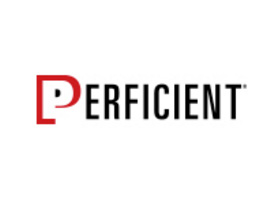A session parameter is a variable that IBM Cognos Framework Manager associates with a particular session. Examples include (current user name, current active language, current date and time, and others). Parameter maps are a method for substituting different values with different keys. A parameter map can be thought of as simple data “look-up table”. Each […]
Posts Tagged ‘Active Directory’
Creating Business Logic – in Cognos Framework Manager
One of the goals of the Cognos Framework Manager modeler is to build a model that makes report authoring easier. To accomplish that, you “build in” business logic” (a loosely defined term here) into your meta model. This business logic can be simple (like simply renaming or hiding a database table column) or quite complex […]
Cognos Framework Manager, Transformer & Metric Designer
During a recent project of mine, I jumped “head first” into IBM Cognos Framework Manager. Yes, it is an awesome tool, but where exactly does it “fit” into the Cognos environment? Are there similar or alternate tools that can be used? I just had to have a quick look! The Cognos Components […]
IBM Cognos Framework Manager – Proven Practice
A proven practice for Framework Manager Meta Modeling is to divide your model into a series of layers, each layer having a specific purpose. (Originally IBM recommended the use of two layers (data and modeling), but later added a presentation layer, and (optionally) a separate dimensional layer). The layers should be: The top layer – […]
Flexible Meta Models and IBM Cognos Framework Manager
A metadata model is “a gathering of Meta information that includes both physical information and business information for one or more datasources and is the foundation for both future modelling and report development within an organization”. Meta-model flexibility can be defined as the ability of a (Meta) model to: Easily expand and grow (to support […]
Tales from a SharePoint 2010 Migration to 2013; Part III
If you have already read ‘Tales from a SharePoint upgrade’ blog series part I and part II, this is part III. One of the more popular upgrade scenarios is upgrading from SharePoint on premise to the Office 365 cloud. This upgrade process can also mean a migration of email systems to Exchange Online, creation of […]
Rapidly Adaptive Visualizations
I was “lucky” enough to be selected to “go on the road” this year as part of my organizations presence at the IBM business analytics summits, taking pace all over the country. If you haven’t attended one yet, you should as the content presented is both […]
Busy Pre-Build week for Microsoft and Azure!
The Microsoft Build Conference is set to kick off next week but the company got off to an early start this week with several different announcements. Windows Azure now generally available in China This may not sound like a huge accomplishment worthy of being called out individually but a little known fact is that Windows […]
Webinar Recap & Replay: Office 365 Best Practices
Yesterday, we hosted a webinar on Best Practices When Migrating to Office 365. During the session, Shalini Pasupneti, a solution architect within Perficient’s Microsoft practice, first polled the audience, and found that more than half were not currently using Office 365. Based on this, she gave a brief overview of what makes up Office 365, […]
Where and How to Learn Splunk
“Never become so much of an expert that you stop gaining expertise.” – Denis Waitley In all professions, and especially information services (IT), success and marketability depends upon an individual’s propensity for continued learning. With Splunk, there exist a number of options for increasing your knowledge and expertise. The following are just a few. We’ll […]
Perficient’s Top 5 Office 365 Blog Posts of 2013
As 2013 comes to a close, we’re taking a look at our most popular blog posts of the year. It was a big year for the cloud, and specifically, Office 365, which officially launched in 2013. Here are the top five Office 365 posts, in no particular order: Using System Center Automation to Manage Office […]
The fast and easy way to get your on-premise users into Yammer!
Does your company have a freemium Yammer environment that pre-dates your latest Enterprise Agreement? Do you want to have the same set of users in Yammer as you do in your on-premise Active Directory? Wonder no longer, dear readers. We now have some recommended reading for anyone who finds themselves trying to rationalize a pre-existing […]
